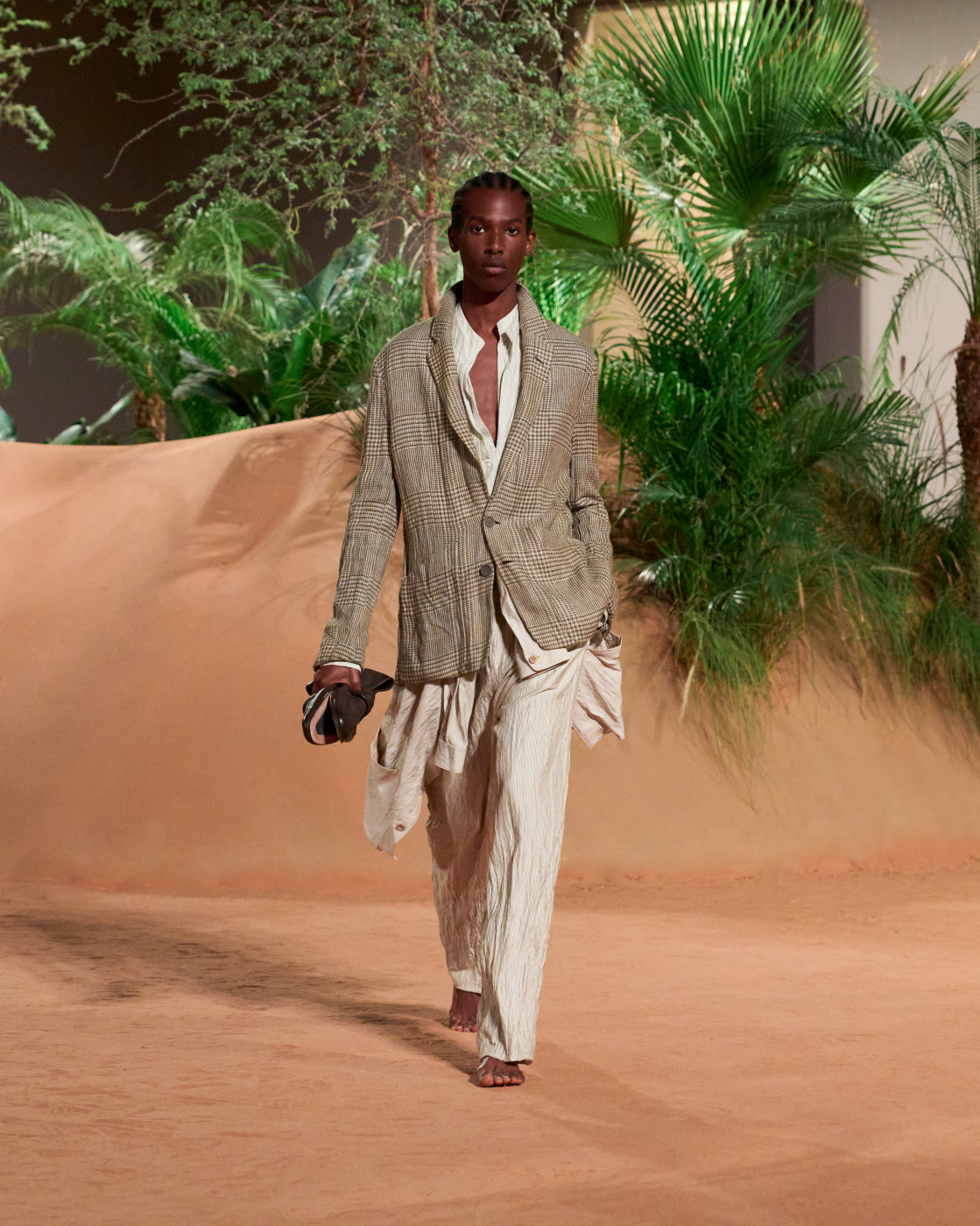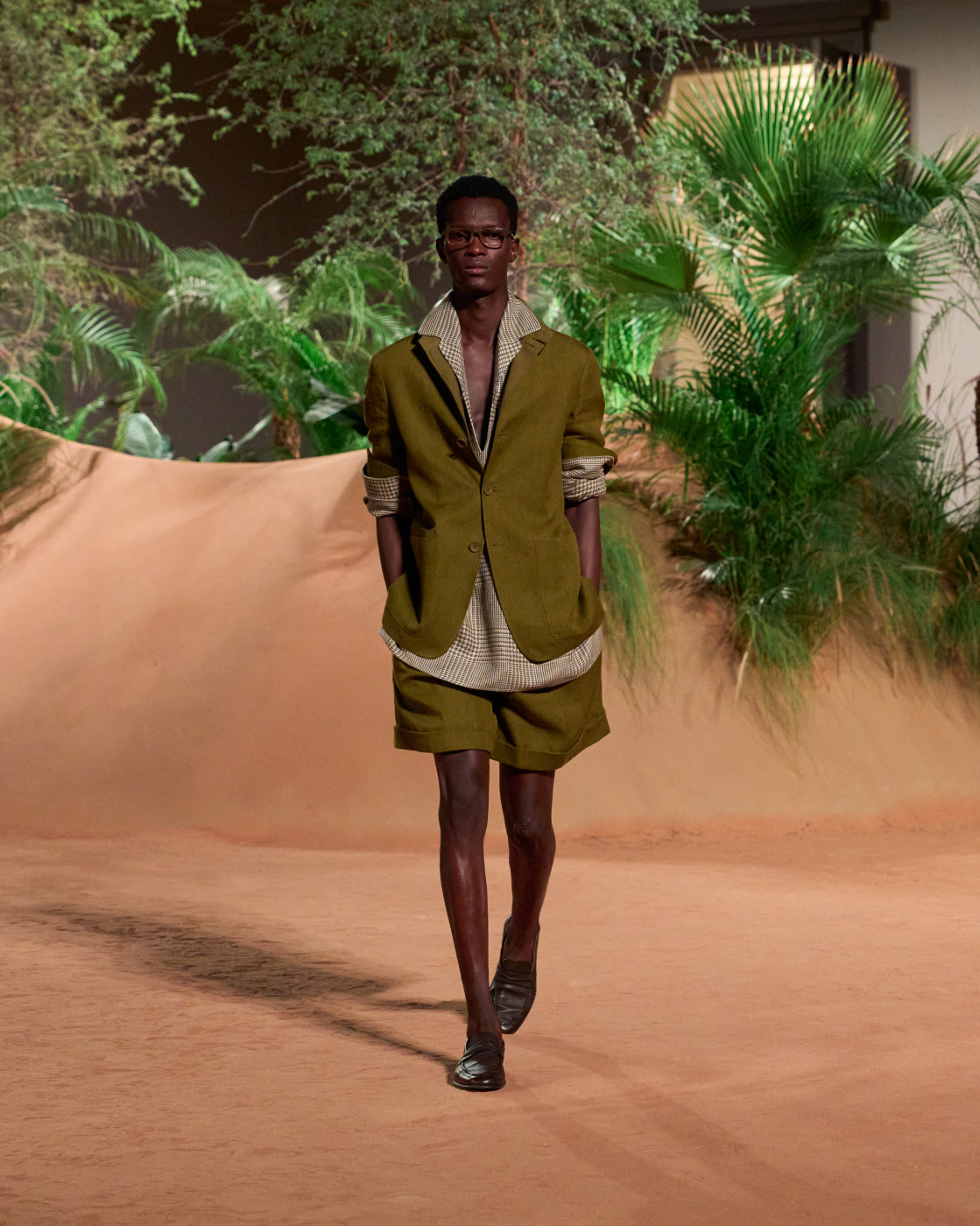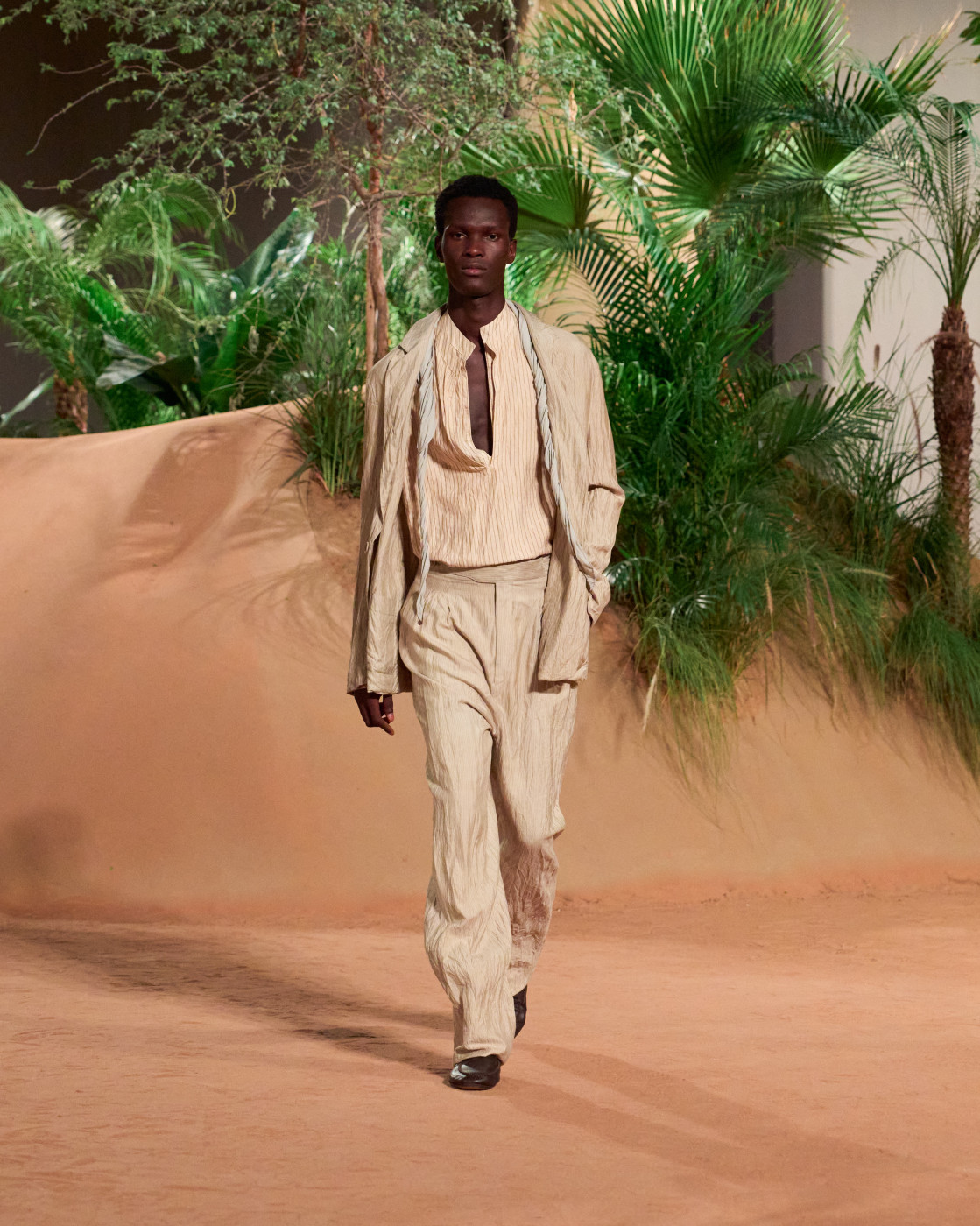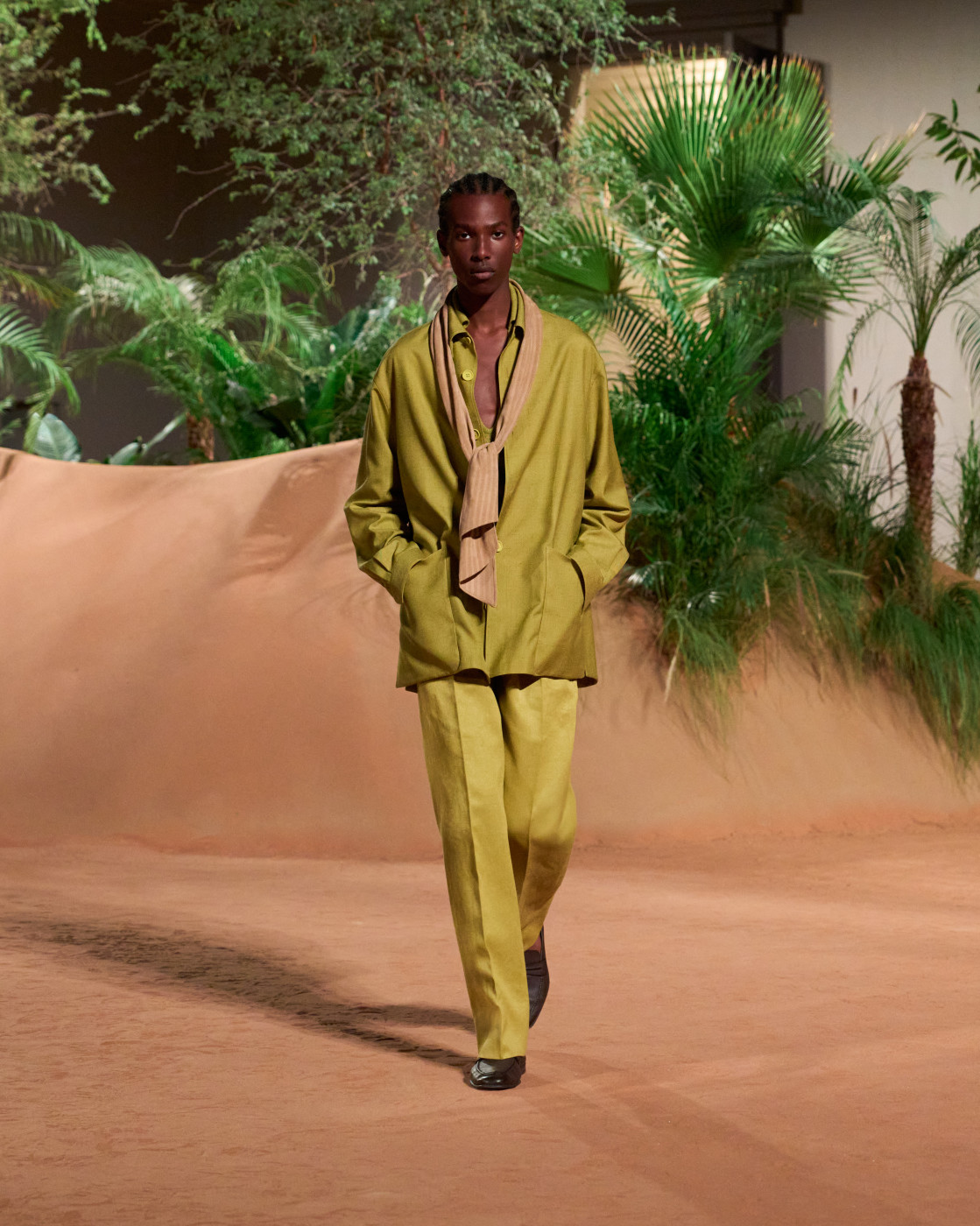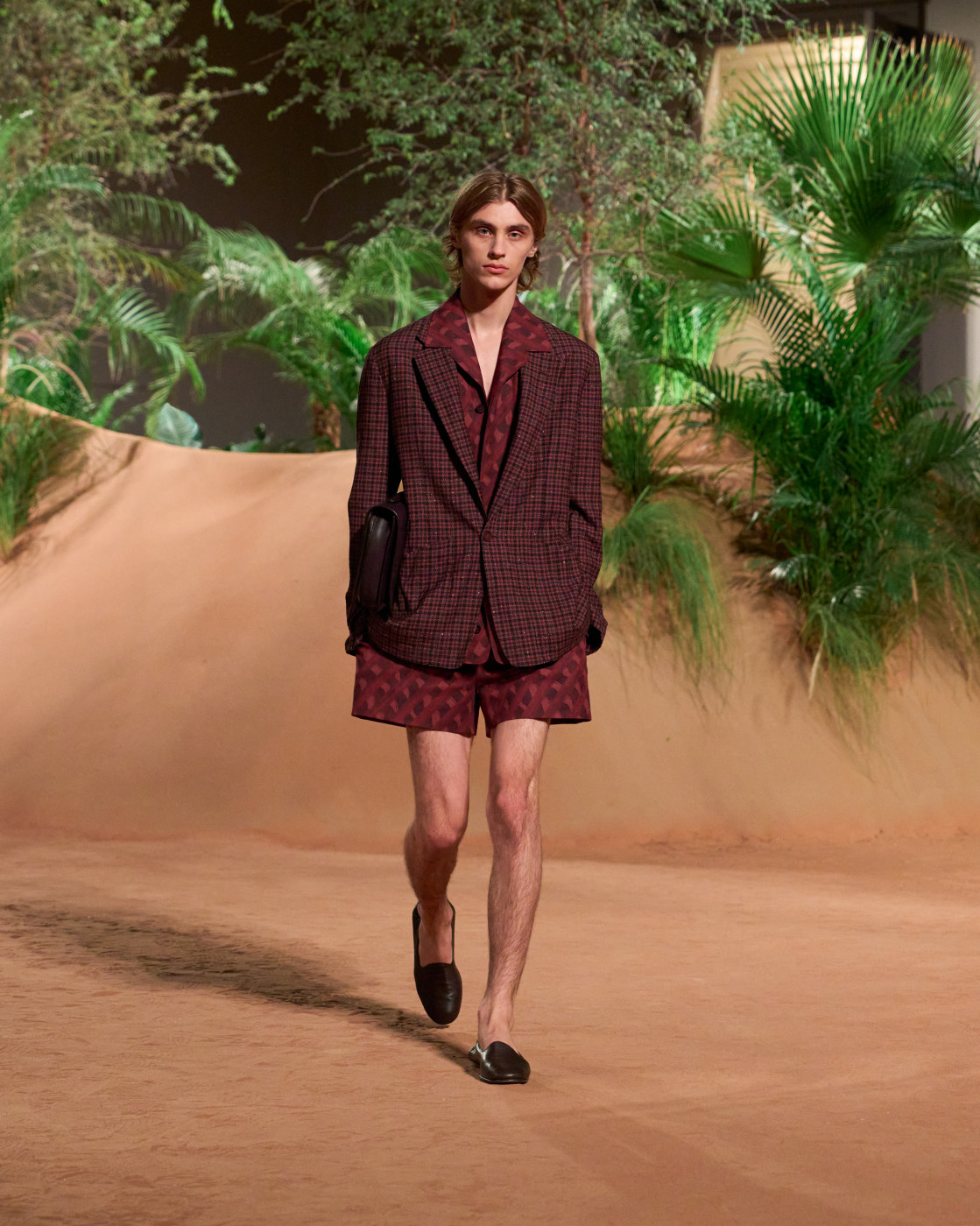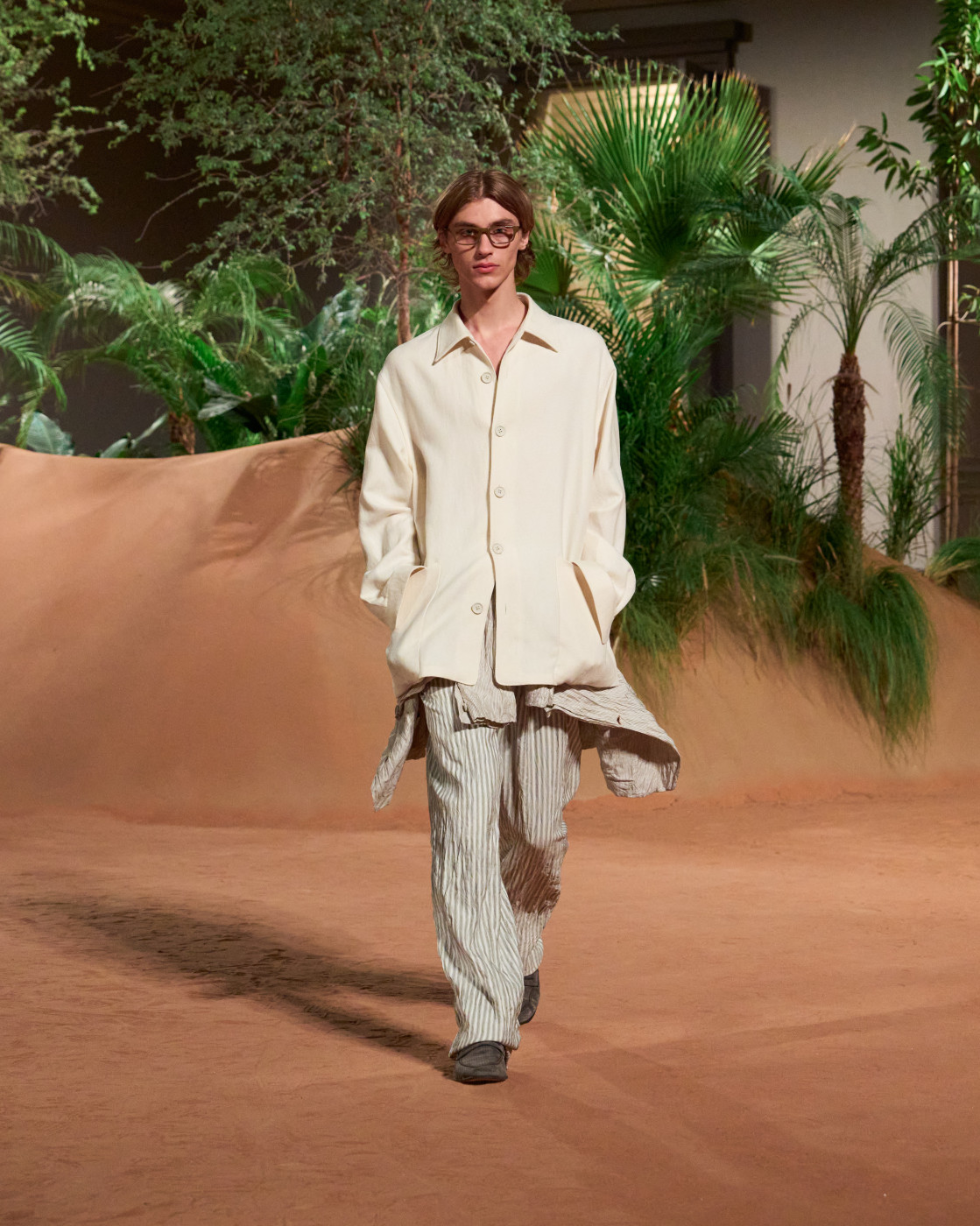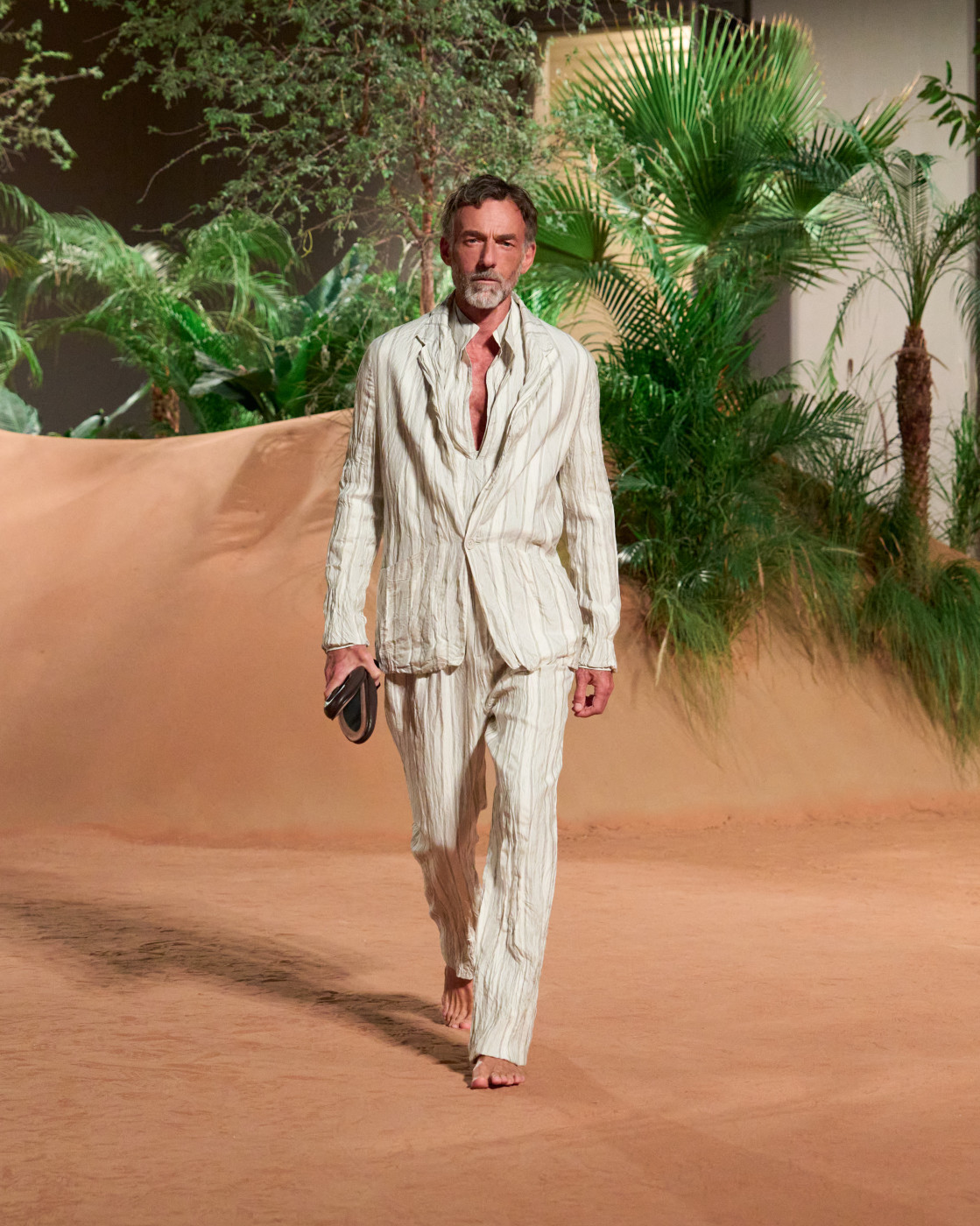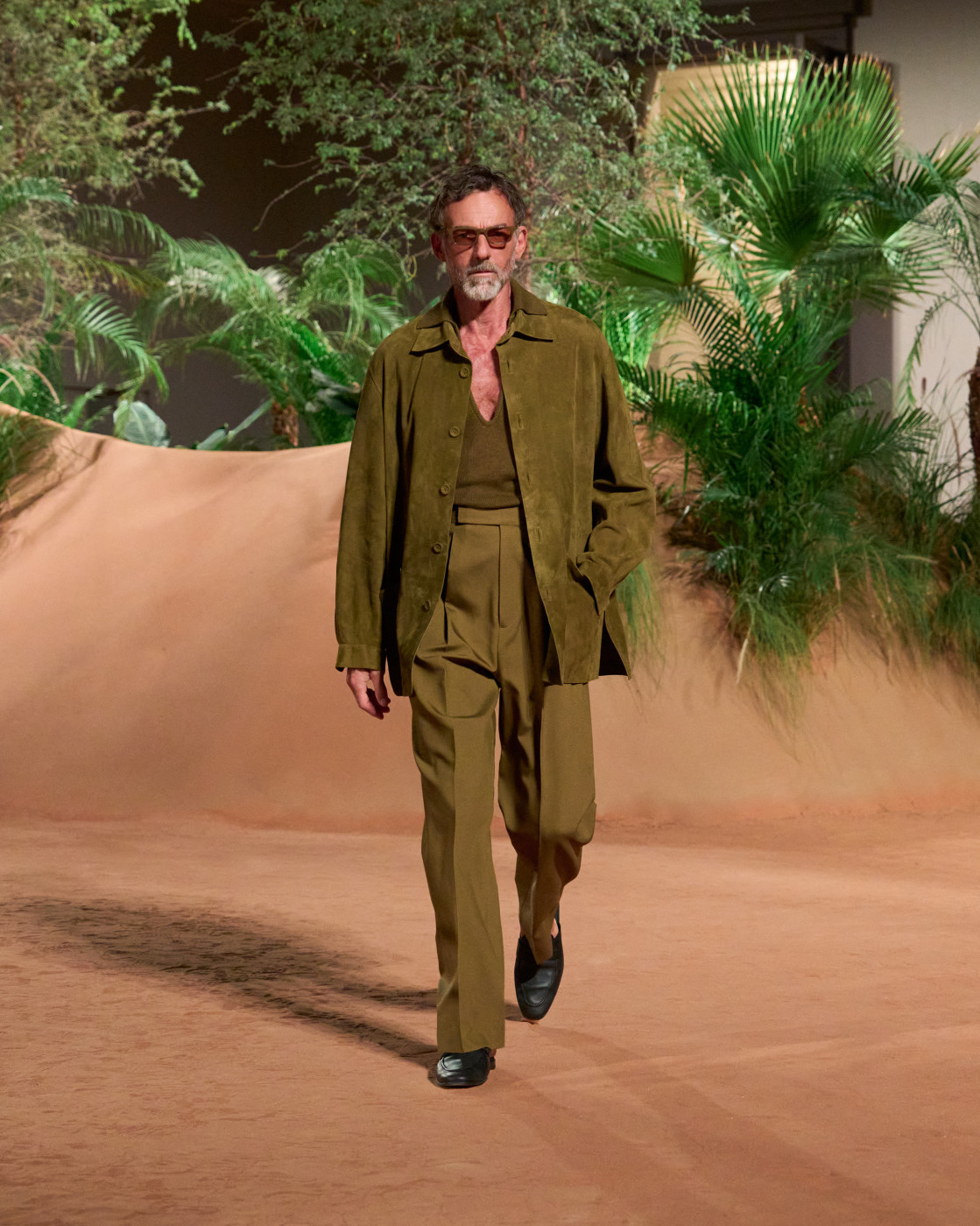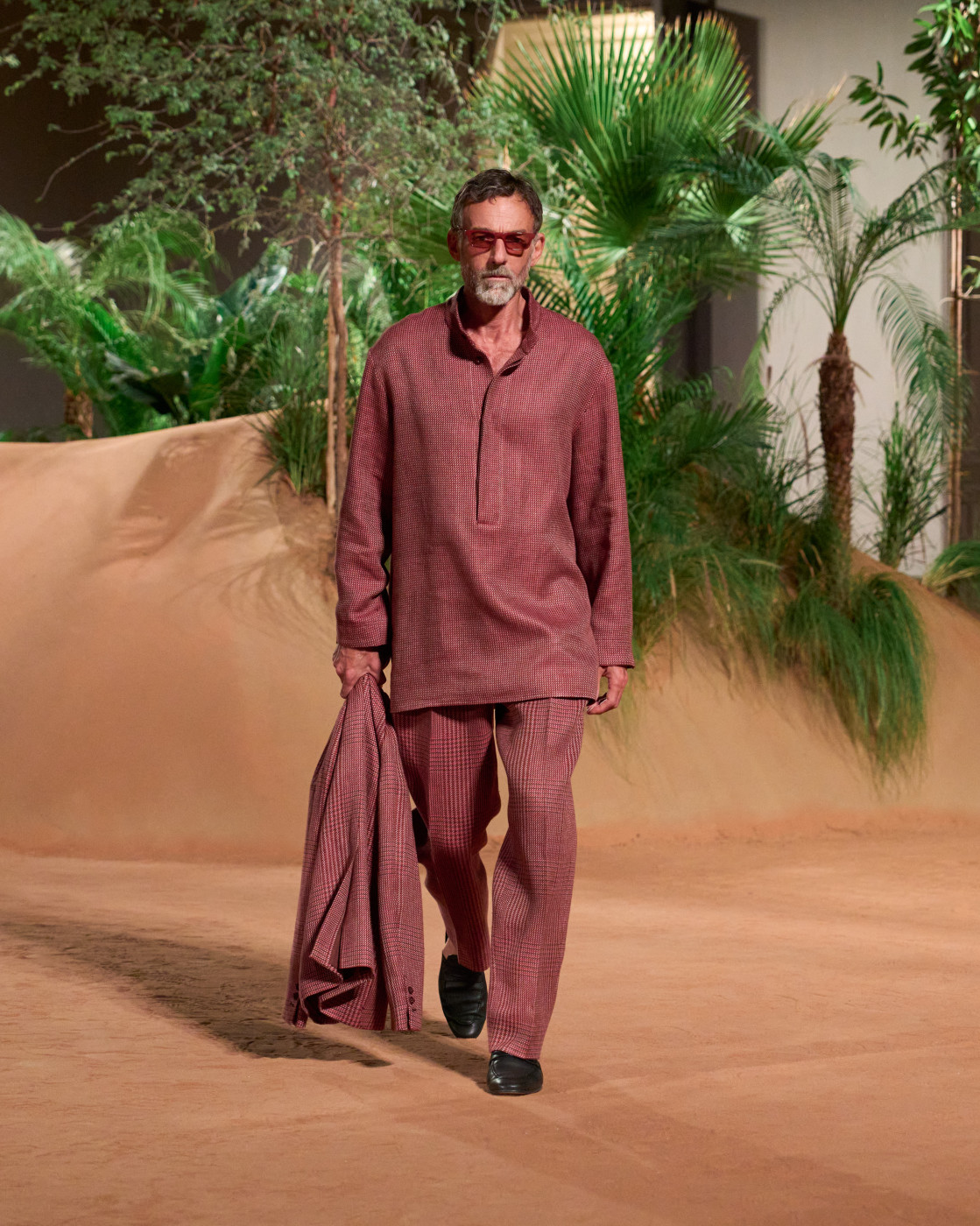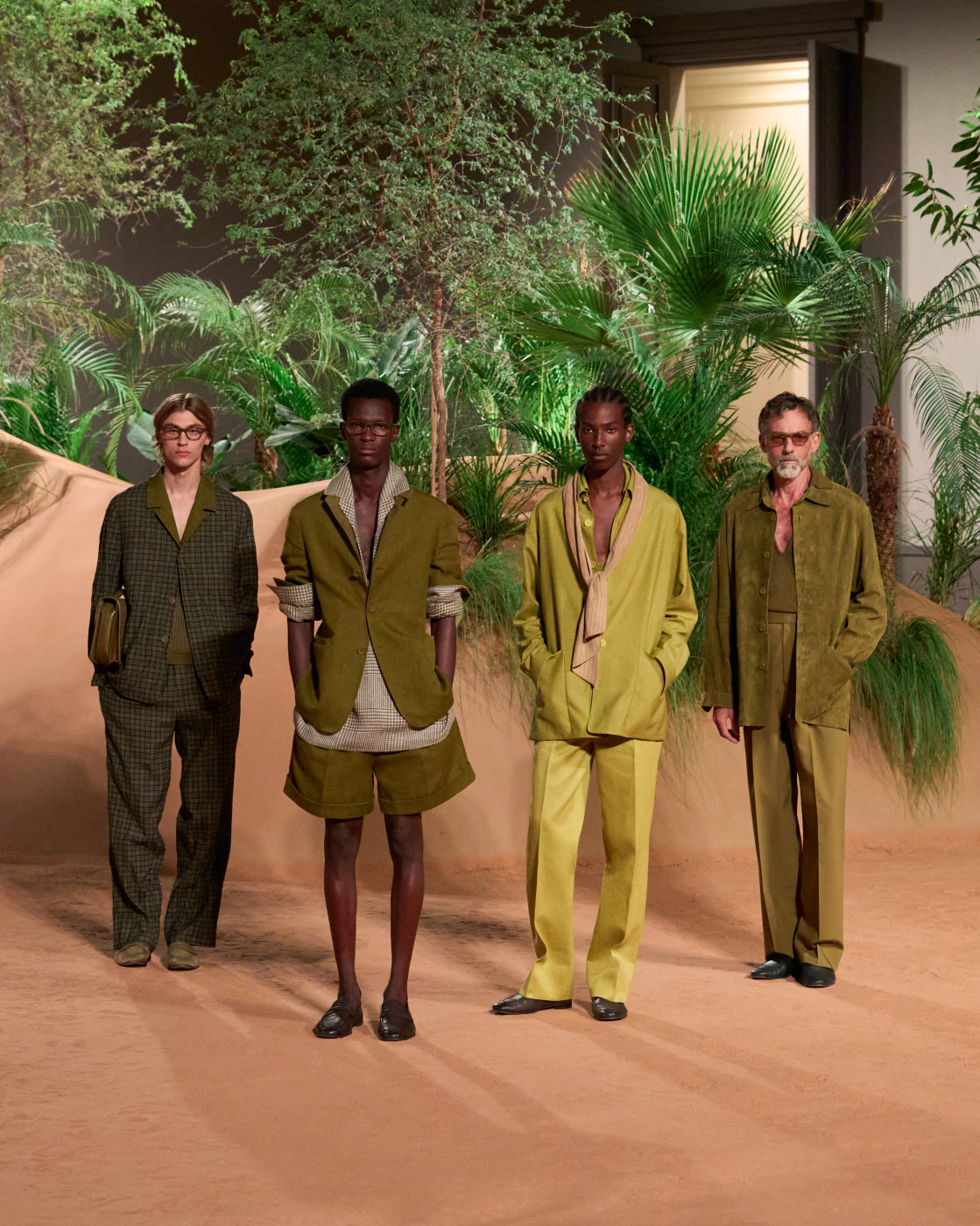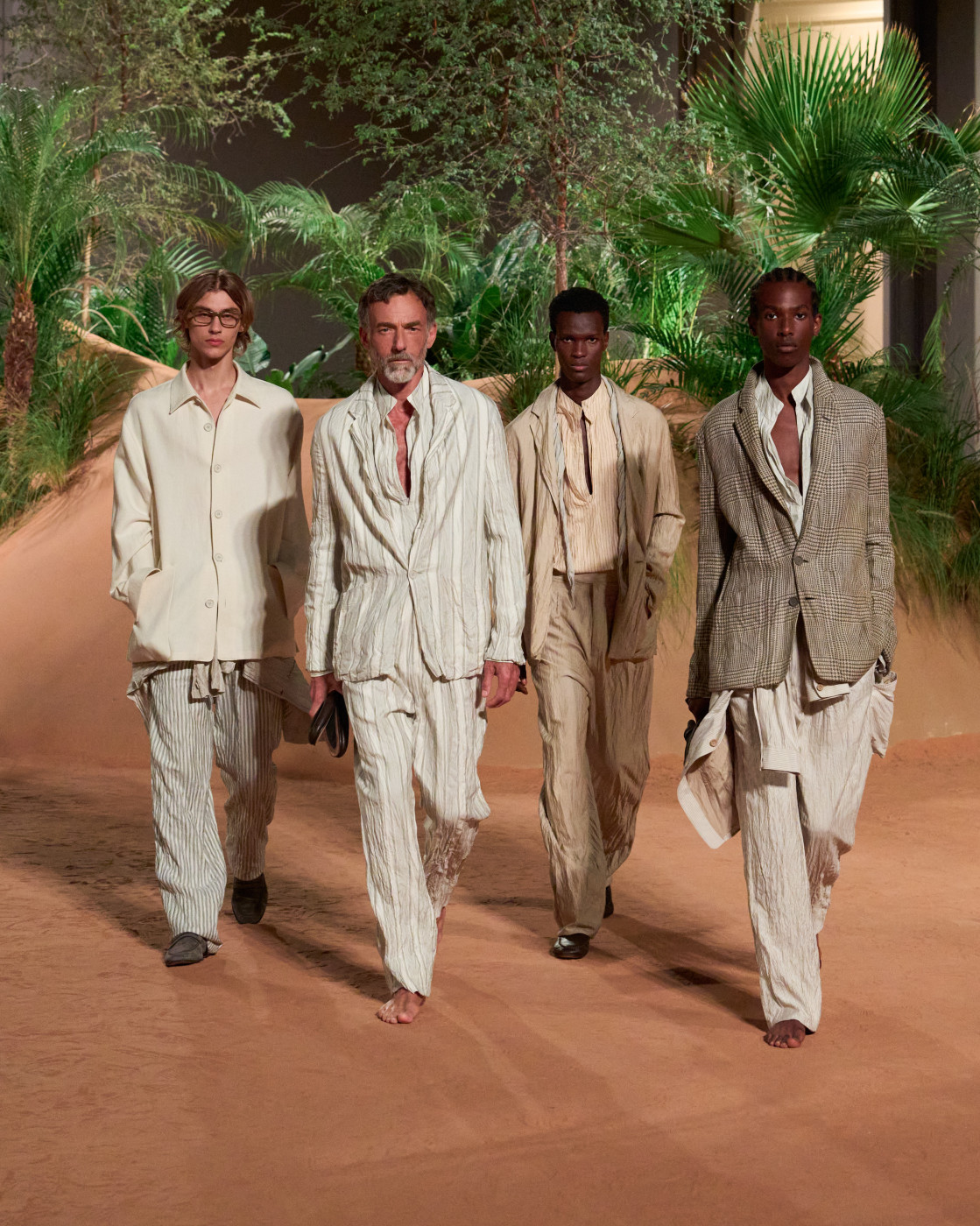
In Menswear Paradise: Zegna’s Sublime Takeover at Dubai Opera
There is something inherently thrilling about a fashion show that exists off the official grid — a moment carved out of the chaos of the calendar, where time slows and attention sharpens. These are the shows where storytelling finds space to breathe, and beauty can unfold at its own pace. That was precisely the mood in Dubai this week, where Alessandro Sartori unveiled Zegna’s Summer 2026 collection at the Dubai Opera, the house’s first-ever runway show outside Italy. The result? An atmospheric, artfully immersive performance that transcended the typical show format. From James Blake’s live piano score to silhouettes that whispered of sun-faded ease, Zegna’s latest chapter was nothing short of transportive.
A Fashion Oasis
The setting alone was extraordinary: the Dubai Opera, reimagined as Villa Zegna for the week — a conceptual meeting point between Oasi Zegna in Trivero and the endless dunes of the desert. This marked the third edition of Villa Zegna, following Shanghai and New York. Half pop-up club, half immersive exhibition, the space serves as a portal into the origins and ethos of the house — a place where top clients can explore, experience, and order entire looks from A to Z.
It was a gesture of poetic hybridity, one that seamlessly fused the brand’s alpine heritage with its growing ambitions in the Middle East. The location itself added another layer of resonance: the Dubai Opera, nestled between the world’s tallest building, the Burj Khalifa, and the Dubai Mall — home to Zegna’s largest flagship worldwide. The choice felt deeply intentional. Zegna already boasts four stores in the city and is eyeing further regional expansion, making this its first runway presentation outside Italy a powerful statement of intent.
The show started with the live, emotive piano of James Blake, transforming the venue into a rare kind of sanctuary — where fashion, music, and landscape met in harmony. Models walked a runway of real sand, a tactile nod to the desert that surrounded them.
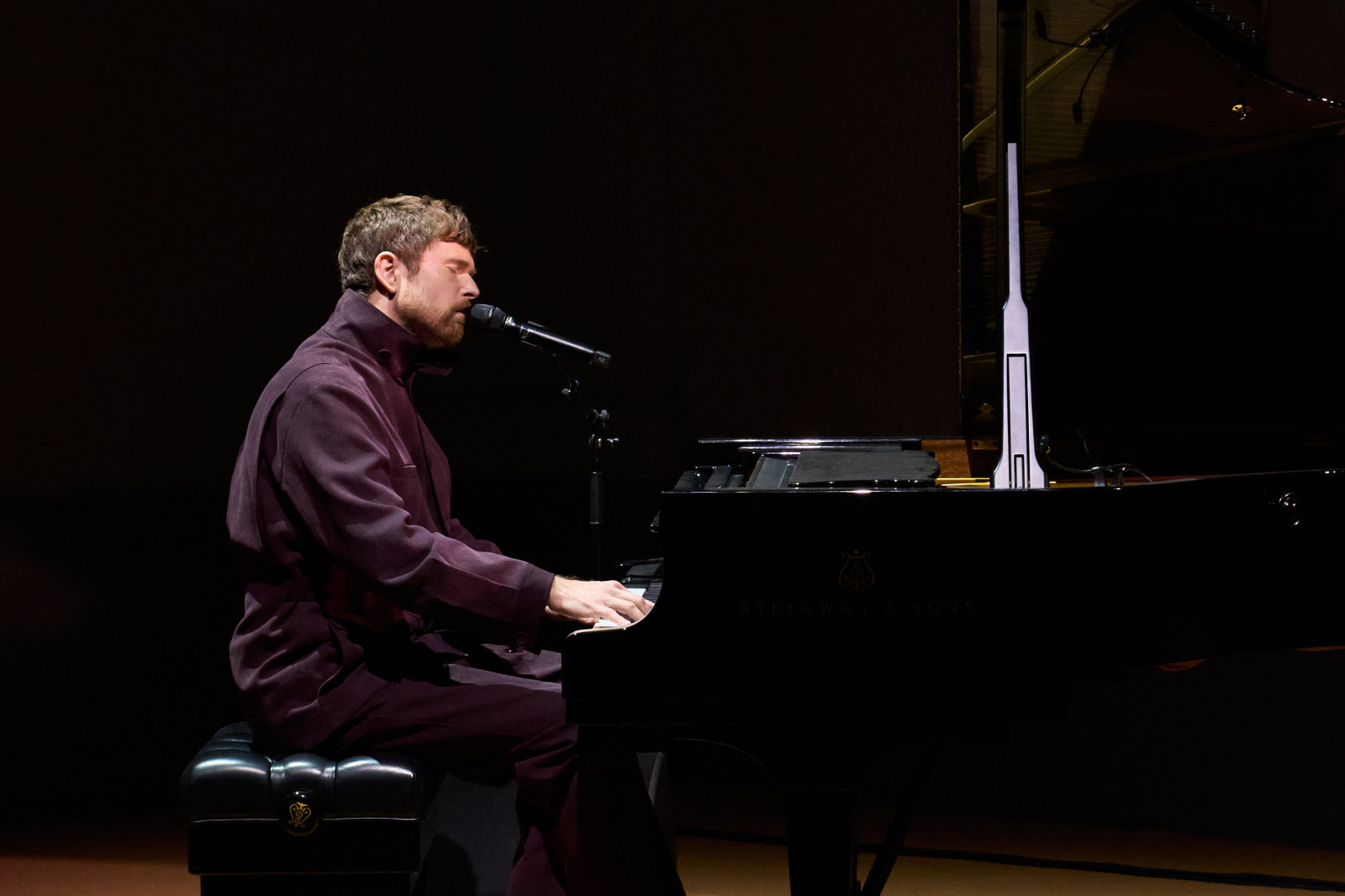
Sartori’s vision, grounded in founder Ermenegildo Zegna’s utopian “Oasi Zegna” ideals, took on fresh resonance here. Clothes, he suggests, are more than garments — they are part of the narrative architecture of life itself. And in this collection, that intimacy was palpable. The pieces bore the marks of movement, of time and touch. Fabrics were washed and crinkled, sun-bleached and softened, as if already lived in - as the show notes put it, “their colours faded like the scorching sun and the heat of Dubai had left a permanent mark.” It was clothing as memory — a kind of gentle archaeology of the everyday.
The Poetry of Life, According to Zegna
“There’s an immediacy, a liveliness to the earthy allure of this collection that belies the layered thought process behind it,” Sartori explained. One particular image — a chair casually draped with worn clothes, ready to be picked up and reinterpreted the next day — became a quiet touchstone for the collection. It captured, he said, the essence of a life lived with intensity, and a wardrobe that evolves alongside it.
Here, fashion is not fixed. It is a conversation between the wearer and the world, fluid and deeply personal. Sartori’s silhouettes reflect this openness: softly structured coats that move like air, leather outerwear as light as cotton, Nehru shirts layered and elongated into outerwear, and shorts smartly styled under summer coats. Jackets were tied low at the waist, loafers slipped on like house shoes. The mood was considered but never constrained — elegance lived in, not imposed.
For Sartori, staying true to Zegna means staying true to the fabric — not just the literal textiles (Zegna remains one of Italy’s most storied textile producers), but the fabric of experience. It’s an approach that lends the brand its unmistakable confidence: quiet, assured, and grounded in the belief that the most meaningful luxury is the kind that adapts to real life.
Courtesy: Zegna
Text: Lidia Ageeva




